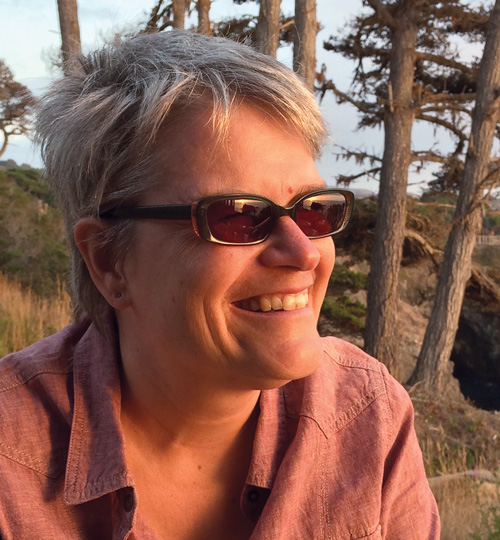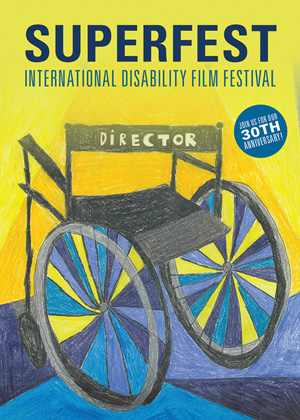
Photo courtesy of Catherine Kudlick.
Catherine Kudlick is professor of history and director of the Paul K. Longmore Institute on Disability. She wears a third hat as co-director of Superfest: The International Disability Film Festival. Now in its 30th year, Superfest is the longest-running disability film festival. It takes place Oct. 22 and 23.
The Longmore Institute, along with co-sponsor LightHouse for the Blind, has headed up Superfest for four years. How are things going?
We’ve been selling out and getting bigger every year. This year we had 119 submissions, more than double what we got last year.
What’s the idea behind Superfest?
One in five Americans identifies as disabled, so it’s a huge swath of the human experience. It’s the one minority that anybody can join at any time, yet society has been so good at ignoring it. The festival counters that and says, “Wow, disability is really important and interesting and universal.”
What types of films does Superfest look for?
Films that tell a new story or give you something new to think about. One of our films a couple years ago was a stop-motion animation about a community of little dolls with disabilities. A doll without a disability ends up in the middle of this group and is not fitting in. So that’s kind of flipping the story. It’s all about new perspectives and challenging stereotypes.
Which films don’t make the cut?
There’s a ton of feel-good films about disabled people — somebody decides to climb a mountain, and then they get to the top of the mountain and, oh, isn’t it great? The community refers to those films as inspiration porn.
What’s wrong with inspiration porn?
It takes disability out of the realm of everyday experience. The person is already considered weird, but now they’re weirder. It’s not grappling with the person and their world; it’s grappling with this image of somebody who’s not human at all.

Name a personal favorite from a past Superfest.
To Be or Not to Be told the story of this guy in Kazakhstan and the first, maybe, 20 minutes are of him in this weird setting cooking a meal. You don’t know what’s going to happen, but you sense something interesting is unfolding. It’s intriguing and arty and smart and beautiful. The lead actor is very, very handsome in a nonstandard way. He has a very pronounced physical disability.
Apart from the subject matter, what sets apart Superfest?
People with disabilities have few places where we gather just to be ourselves. Most of the time we’re singletons. We’ve been taught to be independent and even be ashamed to be around anyone else like us. At a place like Superfest, the shame isn’t there, and it’s so liberating, even intoxicating. For once in your life nobody’s staring or looking away.
How accessible is Superfest?
Of course we have captioning, American Sign Language interpreters and audio description. People in wheelchairs are integrated throughout rather than segregated in one part of the theater. We might get 40 people with wheelchairs, and they want to sit with their nondisabled friends and get rowdy.
It gets rowdy?
We encourage it. You can hoot and holler and stomp or clap or wave your hands. It’s unlike any film experience where people usually sit quietly.
What does San Francisco State get out of Superfest?
One, it’s a film festival rooted in social justice issues that the University cares deeply about, and then, we involve a lot of students. We have a group of students — all of whom identified as having disabilities — do the initial screening to narrow the pool of films down to 30 or 40. They learn about film, about disability, how to really think about what a filmmaker’s aims are. It’s a real education for them.
For venues and tickets, visit www.superfestfilm.com.